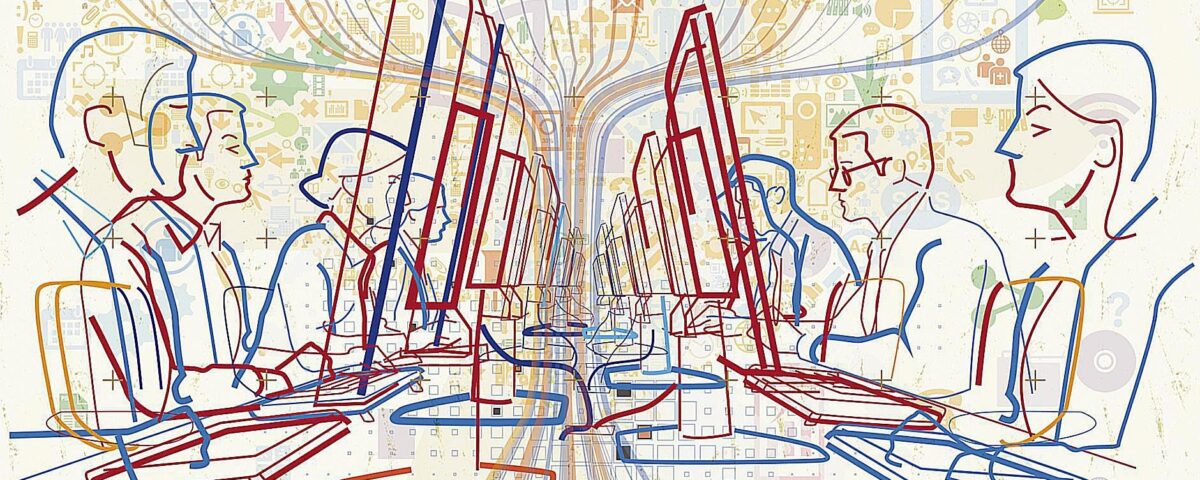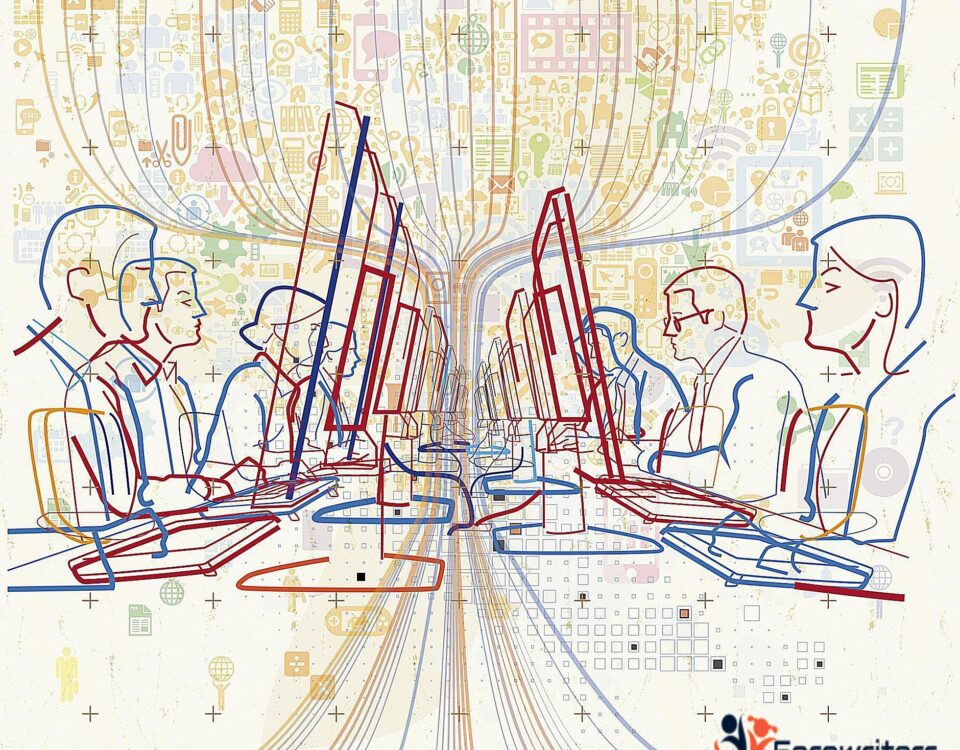- Top Quality Custom Essays
- +1 (628) 201-7932
- eprowriters01@gmail.com
The relationship between technology and income level
The relationship between technology and income level

Last updated on October 7th, 2023 at 10:49 am
1. Analyze the following situations and determine which is true about the relationship between technology and income level.
Select one:
a. Individuals across income levels generally have the same access to technology due to the advent of WIFI
b. Individuals with higher incomes tend to have better access to technology and better skills to utilize resources
c. Individuals with higher income levels tend to have the same access to technology as those in lower income categories
d. Individuals with lower income levels increasingly have similar access to
2. According to research conducted by the Pew Research Center, African Americans are more likely to use Twitter than whites.
Select one:
True
False
3. Middle-class, college-educated African Americans are less likely as their white counterparts to have broadband Internet services at home.
Select one:
True
False
4. According to sociological research, interpret which of the following best explains the persistence of the digital divide?
Select one:
a. Gender inequality
b. Racial inequality
c. Social class and income inequality
d. Ethnicity inequality
5. All but which of the following is considered a measure of Socio-Economic Status (SES)?
Select one:
a. Occupation
b. Income
c. Place of residence
d. Political party affiliation
6. Which of the following explains why closing the digital divide involves more than creating more access to the internet?
Select one:
a. The digital divide also means addressing existing policy that enforces differential access to the internet
b. The digital divide has actually shrunk almost entirely thanks to the expansion of technology in schools
c. The digital divide also means differences in ability to use technology once it is available, so this most also be addressed
d. The digital divide requires that many communities received updates to technological infrastructure like telephone poles before better access can be created
7. The social stratification we see in the non-virtual world is unlikely to be reproduced in social-networking communities because they are insulated from broader social forces.
Select one:
True
False
8. Which of the following represents a functionalist perspective on the internet and the digital divide?
Select one:
a. The internet and use of it is a marker of personal and professional status and online activities reveal information and different lifestyles
b. The internet is available mainly to a professional class so that they, in turn, can contribute to making society better
c. Powerful actors control access to and distribution of the internet and technologies, creating inequality
d. Women face greater barriers to accessing the internet than their male partners because of economic disadvantage as well as the disadvantages of a patriarchal social structure
9. Conflict theorists would argue that the digital divide might also be described as:
Select one:
a. Social reproduction
b. Social stratification
c. Symbolic interaction
d. Resource management dispute
10. Which of the following represents a feminist perspective on the digital divide?
Select one:
a. Women face greater barriers to accessing the Internet than their male partners because of economic disadvantage as well as the disadvantages of a patriarchal social structure
b. The Internet and use of it is a marker of personal and professional status and online activities reveal information and different lifestyles between men and women
c. The Internet is available mainly to a professional class so that they, in turn, can contribute to making society better
d. Women and men increasingly spend less time together with the advent of digital technologies
11. Which of the following represents a conflict theory perspective on the internet and the digital divide?
Select one:
a. Powerful actors control access to and distribution of the Internet and technologies, creating inequality
b. The Internet and use of it is a marker of personal and professional status and online activities reveal information and different lifestyles
c. The Internet is available mainly to a professional class so that they, in turn, can contribute to making society better
d. Women face greater barriers to accessing the Internet than their male partners because of economic disadvantage as well as the disadvantages of a patriarchal social structure
12. According to sociological research, which of the following best explains the persistence of the digital divide?
Select one:
a. Gender inequality
b. Racial inequality
c. Socio-Economic status
d. Ethnicity inequality
13. Which of the following is not a difference commonly associated with the digital divide?
Select one:
a. Differences in the types of activities users are engaged in while online
b. Differences in the speed and quality of Internet service
c. Differences in skill and ability needed to fully utilize the Internet and technology
d. Differences in ability to detect malware while online
14. What is one major fear some hold about allowing the digital divide to persist?
Select one:
a. The U.S. will lose workers to technological companies in China and India, where the digital divide is less pronounced
b. The U.S. will see an influx of IT workers from the Philippines, creating too much competition for jobs here
c. The U.S. will see increases in poverty and isolation if the digital divide persists
d. The U.S. will lose its competitive advantage in the global economy
15. Which of the following represents a cultural perspective on the Internet and the digital divide?
Select one:
a. Powerful actors control access to and distribution of the Internet and technologies, creating inequality
b. The Internet is available mainly to a professional class so that they, in turn, can contribute to making society better
c. Women face greater barriers to accessing the Internet than their male partners because of economic disadvantage as well as the disadvantages of a patriarchal social structure
d. The Internet and use of it is a marker of personal and professional status and online activities reveal information and different lifestyles
16. The world’s largest computer controlled dispatching facility is in Omaha, Nebraska.
Select one:
True
False
17. What is the primary reason that individuals with less power generally have less knowledge about technology?
Select one:
a. These individuals reside in countries where the internet is not available
b. These individuals are generally less capable of learning technological knowledge
c. These individuals often lack the means to learn about technology
d. These individuals generally have not worked hard enough at accessing technology
18. Analyze what an examination of Socio-Economic Status (SES) reveals in relation to the digital divide.
Select one:
a. Inequalities in access to privilege
b. Inequalities in access to power
c. Inequality in income and wealth
d. All of the above
19. Which of the following is not a factor related to the digital divide?
Select one:
a. Information accessibility
b. Information utilization
c. Information readability
d. Information receptiveness
20. The digital divide commonly refers to differences in access to the Internet. But this term also refers to: (Select all that apply)
Select one or more:
a. Differences in the types of activities users are engaged in while online
b. Differences in the processing systems of Internet users
c. Difference in skill and ability needed to fully utilize the Internet and technology
d. Difference in preferences of Internet users
21. The digital divide affects individuals in both the United States and the developing world.
Select one:
True
False
22. Which of the following best describes how the digital divide has impacted social roles?
Select one:
a. Traditional roles still exist to some extent, but the digital divide has made us a aware of new and different social roles
b. The digital divide has reinforced traditional social roles and has made it less likely we will see a shift to new and different social roles
c. The digital divide has eliminated social roles in our society
d. The digital divide has eliminated inequality in gender roles in our society
23. How might informational professionals help close the digital divide?
Select one:
a. By helping low-income individuals learn to utilize technology
b. By helping individuals, regardless of economic status, learn to utilize technology
c. By helping high-income individuals learn to utilize technology
d. By helping communities improve communications infrastructure
24. How might social scientists measure the digital divide? Select all that apply.
Select one or more:
a. Access v. non-access to the internet
b. The types of sites which are access by users
c. The amount of time spent online daily
d. The political affiliation of users
25. Which of the following best describes what Socio-economic status (SES) is?
Select one:
a. An individual’s position within a hierarchical social structure
b. An individual’s position within a non-hierarchical social structure
c. An individuals social position within a technological organization
d. An individual’s social position within an technological organization
Need help with this or similar assignment?
- Tell Us Your Requirements: Please provide us with the specifics of your paper so that we may do our best to personalize it. Select the discipline, word count, format, academic level, and other details on the order form.
- Connect with the Best Writer: Consult and collaborate with an expert and complete your paper on schedule.
- Monitor the progress: Control the work process by checking the completed parts of your document right away. You can easily submit your comments by chatting with your essay writer on our website.
- Download Your Paper: Get your paper written according to your specifications. It is important to note that you only pay for an essay when you are completely satisfied with the outcome. Please provide us your feedback about our collaboration.
About Us
Eprowriters.com, and its afilliate blog Eprowriters.net, is a custom essay writing service that has been providing academic support with great success for more than five years. We are constantly updating our objectives in order to improve the quality of service we deliver and increase client satisfaction. We’ve progressed to an original concept as a result of our success.


